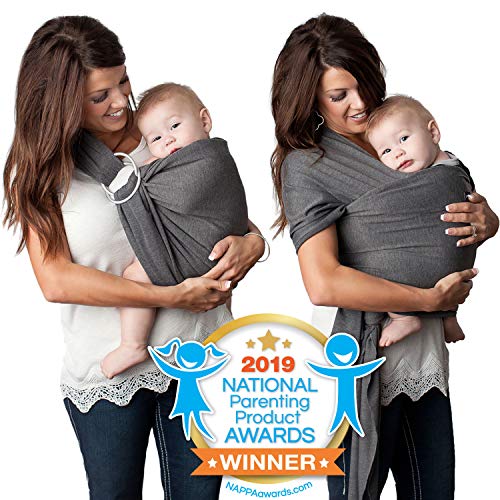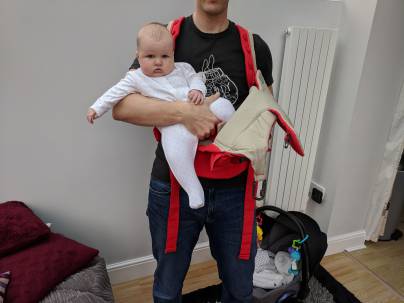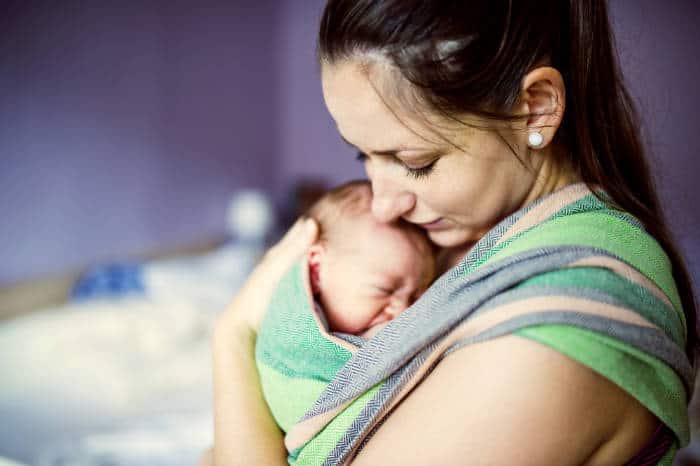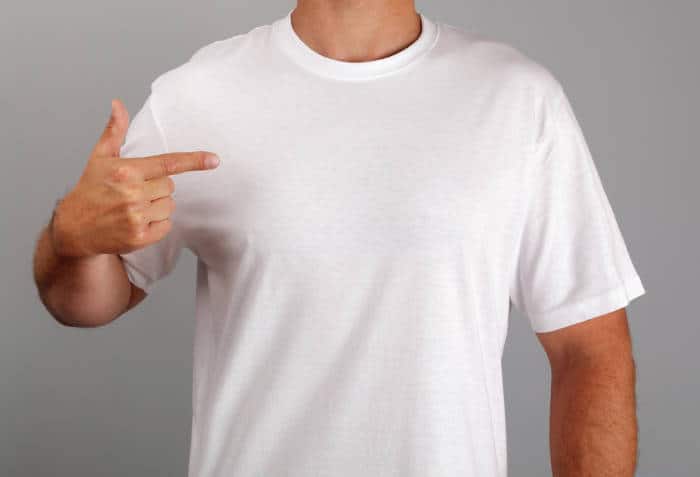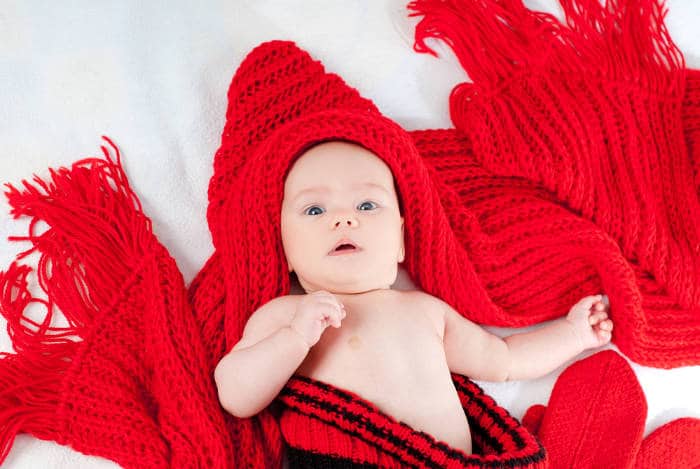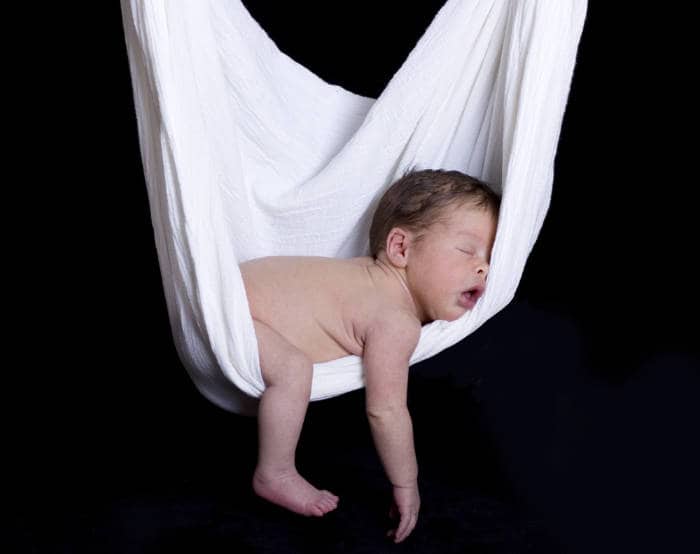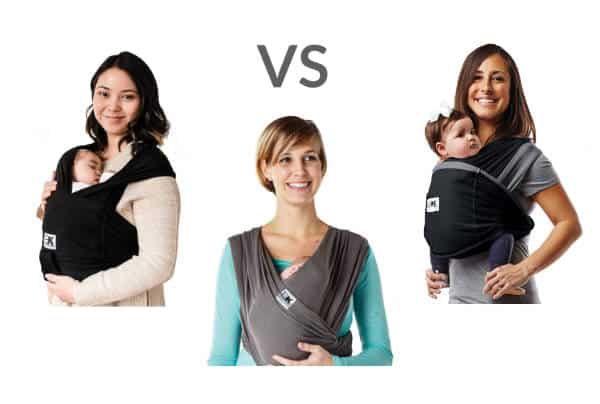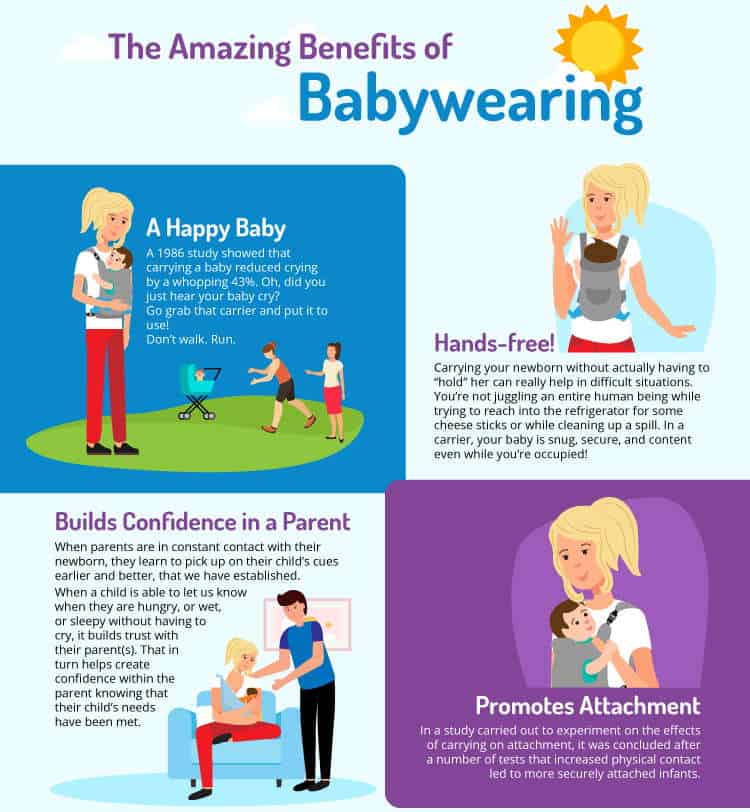You don’t really realize how much time is devoted to carrying a baby until, well, you’ve had one of your own. I’m talking, hours on end. But it’s completely normal and all for good reason. Newborns have this innate need to be close to their caregivers. The sound of your heartbeat, the smell of your skin, and the warmth of your body all play a role in your baby’s comfort and development.
It all sounds so great.
But holding your baby constantly can make life a bit trickier. The simplest tasks, such as washing dishes or fixing a sandwich, can become all near impossible while holding your baby.
Well, that’s where baby carriers come into play. Baby wearing is a convenient way to have your baby close and comforted all while freeing up your hands for other tasks. So go ahead and make that sandwich and wash that dish – or don’t. Either way, your baby will be sure to get her share of snuggles in. This is just one of the many benefits baby carriers offer.
In today’s modern world, baby carriers come in a variety of styles. From soft carriers to wraps, cotton to spandex, there’s surely something for everyone in the market. Finding the perfect baby carrier for petite moms that fits perfectly, however, can be overwhelming. We’ve done most of the research for you and rounded up some of the best baby carriers out there for those with smaller frames.
The Best Baby Carrier for Petite Mom – Our Picks
- Baby Tula Free to Grow – With plenty of wiggle room for adjustment, this use-as-you-grow baby carrier comes in a variety of colors and designs.
- Boba Wrap – This stretchy wrap can be used as soon as baby is born!
- Kids N Such 4-in-1 Baby Wrap Carrier and Ring Sling – A baby carrier AND a ring sling? Need we say more?
- Infantino Flip 4-in-1 – Lightweight enough to tote baby around for hours.
- ErgoBaby 360 Carrier – A household name in the baby carrier market, this has plenty of positions for the adventurous baby!
Note: Our individual reviews are below, but you can also click any of the links above to check current prices on Amazon and other retailers
Table of Contents
Baby Carriers for Petite Moms Reviewed
Baby Tula Explore
Tula is a leading brand for carriers and other baby essentials. The Baby Tula Explore is one of their first front facing carriers and comes in a variety of designs. Because of its broad weight range, this carrier’s major selling point is the all-in-one tag it comes with – you’ll be sure to get a longer use with this. It is also a minimal-hassle carrier. Because of its light weight, it is easier to pack on the go. The easy to put on straps make it a cinch to take baby in and out.
With three width and two height settings, this is the ideal baby carrier for petite moms. It is highly adjustable for a customized, ergonomic fit for all different body styles. Even with a petite frame, you can share this with a partner who may have a larger build.
The 100% cotton, single layer panel is a great feature for those using the baby carrier in warmer climates as the absence of extra layers and padding allows for greater breathability and airflow.
Minimum Waistband Size: 27 inches
Suitability: Infants from 7-45 lbs
Carry Positions: Front inward carry (newborn, infant, and toddler); Back carry (babies with good head and neck control, toddlers)
What we liked:
- Highly adjustable for a custom fit
- Lightweight and breathable
- Lumbar support from wide padded waistband
- Removable, matching head support
- Easy to put on and take off
- Comes in different colors and patterns
- No infant insert required for newborns
- Waistband pocket
- Removable hood
What we didn’t:
- Not the most affordable carrier
- No front forward facing carry option
Boba Wrap
The Classic Boba wrap is a traditional wrap – a long piece of fabric (5.5 yards) you tie around your body. Even with a more budget-friendly price tag, it allows you to carry babies up to 35 pounds or until 18 months.
Although this wrap allows for only front inwards carry, you can tie it in two different ways. With that, you have the option to allow baby’s arms and legs to dangle comfortably, or to tuck them in. This is an especially great feature if you are a nursing mother. Hands-free breastfeeding, anyone?
This stretchy fabric is made from 95% cotton/5% spandex and clings to your body for a custom and snug fit – especially when used as a baby carrier for petite moms. However, because of the length of the fabric, there might be quite a bit of material leftover, dragging. One way to tackle this issue is to wrap it multiple times around the waist. Doing this, however, can make it very hot.
Minimum Waistband Size: no minimum, can be wrapped around the contours of your body
Suitability: Infants/Babies up to 35 lbs
Carry Positions: Front Inwards Carry
What we liked:
- Can fit perfectly around petite frames
- Budget-friendly option
- Easy to wash
- Creates a cozy space for baby
- Evenly distributes baby’s weight
- Can nurse in it
What we didn’t:
- Long fabric can dangle on floor while putting it on
- Only front carry – facing inwards
- Can get hot
- Learning curve in tying the wrap
Kids N Such 4-in-1 Baby Wrap Carrier and Ring Sling
This baby carrier from Kids N Such can be uniquely transitioned from a ring sling baby carrier to a traditional wrap for only the price of one. Just add, or remove, the two included metal rings. Both styles are great for those looking for a petite fit since the stretchy, 5.5-yard fabric is completely adjustable and fits snug against your body. It’s also great for any body type and size, really – and that’s a great feature if you’re looking for a baby carrier for petite moms or partners are planning on sharing the carrier.
You can start using the wrap style right away with your newborn by tucking baby’s head to cradle against your chest. Having two different styles also means you’ll get two different positions to wear your baby in, and we are all about options here!
Minimum Waistband Size: no minimum, can be wrapped to your exact specifications
Suitability: Infants/babies 8-35 lbs
Carry Positions: Front Inwards Carry (using the wrap style), Hip Carry (using ring sling style)
What we liked:
- Two ways of wearing
- Infinitely adjustable
- Affordable option
- Can also be used as a nursing cover or postpartum belt
- Machine washable
What we didn’t:
- Fabric can feel hot
- Not able to face baby outwards in front carry
Infantino Flip 4-in-1
The Infantino Flip 4-in-1 offers four different carrying positions and a unique convertible seat. For smaller infants, the narrow seat setting, and padded head support are ideal while front carrying inwards. You can switch to the wider seat for a comfortable and ergonomic fit for your growing child.
This baby carrier also allows for front carry facing out, and back carry and supports babies in the range of 8-32 pounds. This is a highly adjustable baby carrier – the leg openings for baby, shoulder straps, waist belt, and seat can all be adjusted. With a smaller minimum waistband size than other baby carriers, this is a great option for small moms in the market.
There is also a patented “wonder cover bib” to help protect your clothing, and the rest of the carrier, from any baby spit up and drool. The material is both lightweight and breathable and is also easy to pack for travel.
Minimum Waistband Size: 24 inches
Suitability: Infants/babies 8-32 lbs
Carry Positions: Infant front carry facing in, toddler front carry facing in, front carry out, back carry
What we liked:
- 4 different ways to carry
- Waistband size can be adjusted all the way down to 24 inches
- Lightweight
- Machine washable
- Affordable option
What we didn’t:
- Shoulder straps aren’t well padded
- Only one, horizontal strap in the back – might not provide good back support
ErgoBaby 360 Carrier
ErgoBaby is a brand that has obtained worldwide success over the past few years. This ergonomic baby carrier sports a padded lumbar support waistbelt along with padded shoulders to ensure maximum comfort for the wearer and to help maintain a healthy posture. Although most baby carriers usually have Velcro straps or zippers for the waistbelt, the ErgoBaby uses a simple hook and fastener system which may not allow for many different sizing options. The adjustable shoulder straps and soft, floppy structure however, may help counter that issue.
Unlike some other structured carriers, ErgoBaby uses a softer structure that allows for more give to contour baby’s body better, and to ensure a natural ‘M’ position for legs and hips. It is made of soft and durable mesh fabric for ultimate airflow and breathability.
The ErgoBaby 360 allows for four different carry positions and can be used for babies 4 months old to 36 months. With a separately sold infant insert, it can be used from day one.
Minimal Waistband Size: 26 inches
Suitability: 7-12 lbs/0-4 months with insert, 12-33 lbs/4-36 months without insert
Carry Positions: Front carry facing in, front carry facing out, hip carry, back carry
What we liked:
- Multiple carry positions
- Cool mesh material = better airflow and breathability
- UPF 50 material
- Machine washable
- Extra soft structure
What we didn’t:
- Hook and fastener system might not be ideal for smaller moms
The different baby carrier types and carry positions
Baby Carrier Types:
There are four main types of baby carriers for baby wearing – soft structured carriers, wraps, ring slings, and meh dais. Each is unique and attracts different people for different reasons. They each serve one main purpose though – to act like a protective cocoon around your body and your baby while allowing you to multitask.
Soft Structured Carrier (SSC)
Resembling a backpack, a soft structured carrier is chock full of straps and can usually be worn in the front or back. These types of carriers have a buckled, padded waistband. Once this is fastened around the waist, it creates a “seat” for baby’s bottom. For this, you’d want to look for a panel or “seat” wide enough to support baby from one leg to another. They come with buckled shoulder straps and almost all of the straps are adjustable, so you can be sure to find an ergonomic and comfortable carrier for petite frames!
They usually feature multiple different positions to hold your baby – which we’ve outlined below.
SSCs tend to grow with baby, from infancy to toddlerhood – so that means you can use them for a longer time. They also come in a variety of fabrics and patterns.
Wrap
If that just made you think of a burrito, we think it’s time for a lunch break. Otherwise, babywearing wraps are long pieces of fabric that can be tied multiple ways to create a “pouch” for your baby. Often made of stretchy material, wraps are a one-size-fits-all baby carrier. For a smaller build, you can tie up any long, dangling fabric in a way that it doesn’t drag on the floor.
There is infinite adjustability here, so baby is sure to be snug and content. It’s even great for breastfeeding hands-off!
There might be an initial learning curve, but once you’ve mastered the art of tying a wrap, you’ll find it quite easy and quick. And because wraps are 100% fabric only, with no fancy bells and whistles, they are a breeze to clean!
Ring Sling
Ring slings are very similar to wrap carriers. The one noticeable difference is the addition of two rings on one end of the fabric. You thread the fabric into one of the large rings, and tuck under the other – and then tighten and adjust to your preference.
Baby slings go from one shoulder to the opposite side hip and create a pouch for baby. If you suffer from shoulder or back pain, however, these might not be the greatest option as they tend to strain your shoulders.
Ring slings come in a variety of patterns, fabrics, and colors – there is sure to be something that calls out to your soul. And if that’s pink polka dots – more power to you!
These carriers are great for quickly popping baby in and out because there isn’t any tying or retying involved!
Meh Dai
Meh Dai’s are a style of soft-structured baby carrier that originated in China. They are a hybrid between a wrap and an SSC. They have a body panel in which the baby is inserted and four pieces of fabric that extend from each corner of the panel. These straps of fabric are then wrapped and tied around the caregiver.
These are highly adjustable, so people of various body frames and sizes can use Meh Dais, including petite women! Although there is a learning curve to these carriers, it is minute and easy. They also have a very minimalist feel to them as there aren’t any bulky paddings and buckles.
Baby’s weight in this type of baby carrier is evenly distributed amongst both shoulders – so less back and shoulder pain. Yay! These also come in many different, gorgeous patterns and colors.
Baby Carrier Positions:
There are four different baby carrier positions which means that moms and dads can carry their child in a way that is comfortable for both.
Front Inward Facing
- Baby is positioned in the front with her face towards your body
- Younger babies do not need excessive stimulation, so facing inwards is comforting
- Babies are able to see the faces of their caregivers
Front Outward Facing
- Baby’s back is adjacent to the front of your body
- Great position for more visual stimulation
- Use only when babies have good head and neck control
Hip/Side Carry
- Babies are carried on your side
- Use only when babies have good head and neck control
Back Carry
- When baby carriers are worn as backpacks
- For soft-structured baby carriers, use this position only after babies have good head and neck control
What to look for in petite size carrying
Adjustable Straps
Carriers do not come in different sizes like traditional clothing, so strap adjustability is important. For soft structured carriers and Meh Dais, you want to make sure the waist belt has adjustable straps as are the shoulder straps, so you can find a fit that is comfortable for both you and baby. Some carriers even come with 2-way adjusters. These straps on the back/shoulders can be worn in either an ‘H’ or ‘X’ position for even more precise fitting.
Waistband Sizing
It is important to look for a baby carrier that has either a large range for waistband size (so the carrier can be shared amongst different caregivers) or start at a smaller waistband size. Some carriers are also specially made for small moms and men with smaller frames so there is minimal adjustment needed.
What to look for in a good baby carrier
Consider Safety
Proper babywearing techniques, positions, and fitting all factor into the safety of a baby carrier. Babies need to maintain an appropriate hip and leg position in order to ensure natural hip development, in and out of a baby carrier. It isn’t a surprise that some babywearers are concerned about carriers having a possible link to hip dysplasia.
A baby carrier should allow babies to spread their hips naturally in an ‘M’ position instead of extending the legs and keeping them close.
Look for soft structured carriers that have a wide panel to naturally spread baby’s hips and bend the legs.
What exactly is hip dysplasia?
Hip dysplasia, essentially, is a condition in which the hips are not developing properly – the bones aren’t aligning the way they are supposed to. The hip is simply a ball and socket joint. The ball at the upper end of our thighbone fits firmly into the socket. In children with hip dysplasia, the ball does not fit properly in the socket and can be easily dislocated. In small children, this can go unnoticed until adolescent and teenage years when there are visible signs of walking with a limp or hip pain.
Materials and breathability
The body heat between you and your baby while holding or carrying her is inevitable. Some fabrics may cause your baby to overheat during warmer weather, and depending on where you live, that could be year-round.
You’ll want to search for fabrics that are breathable and allow for airflow to keep you and your baby cool. Generally, cotton and linen fabric both help keep the heat at bay. Stretchy fabrics, on the other hand, can feel quite hot, especially due to the multiple layers of cloth.
Having mesh panels on your baby carrier is a great feature for warmer climates. They promote breathability and assist in better airflow – exactly what you want when it’s already hot outside. Some carriers also have zippers that can open and close to allow for (or constrict) more airflow.
Comfort and Padding
A baby carrier can toot hundreds of horns and be breathtakingly beautiful. But if it isn’t comfortable for you or baby, what’s the point? Because let’s face it, if it isn’t comfortable for either one of you, it won’t get much use.
The most comfortable baby carrier is generally one that naturally fits your baby without constraining their body too much. Additionally, they should provide adequate support for your small baby and some wiggle room for your toddler to move freely.
Extra padding in structured carriers also aide in comfort for the both of you. Especially if shoulder straps and waistbands are padded – they’ll help take off a lot of strain you might otherwise face.
Child size/weight range
How long can you use your baby carrier for? Will it support and fit your growing child? These are two important questions you need to keep in mind while selecting a good carrier. Manufacturers usually list the range of weight their baby carrier supports. You’ll want to look for larger ranges and perhaps even carriers that have specially designed inserts for infants. If you’re a parent of multiple children, this is also an important feature to keep in mind. Sometimes, an older toddler wants to be worn and to have a baby carrier that can support him/her is a plus!



